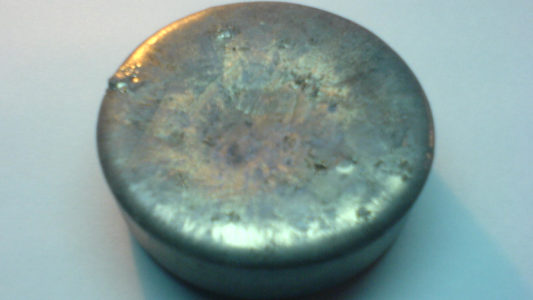Comparison of Sinker Materials

| Material | Density | Note |
|---|---|---|
| Lead | 11.4 g/cc | Best density to price performance and general attributes |
| Tungsten | 19.35 g/cc | Highest density but most expensive |
| Bismuth | 9.78 g/cc | More expensive than the density loss to lead and more brittle |
| Brass | 8.73 g/cc | More expensive than lead, larger sinkers due to lower density |
| Steel | 7.85 g/cc | More expensive than lead, larger sinkers due to lower density |
| Tin | 7.31 g/cc | More expensive than lead, larger sinkers due to lower density |
| Glass | 2.5 g/cc | Typically used in bead form on lures or rigs |
| Concrete | 2.3 g/cc | Cheap but very low density not great for casting |
Lead: Perfect Material with Devilish Drawback
Lead has a lot of properties that make it a fantastic sinker and weight material. So much so that through the 20th and 21st centuries it is the defacto sinker material.
- High density.
- Low melting point.
- Soft and malleable.
- Good stability and corrosion resistance.
- Very cheap metal.
The very big devilish drawback:
- Lead is a neurotoxin with no known benefits to living things.
In human health, current science asserts that no safe exposure level exists for lead. All animals are susceptible to lead toxicosis. For wildlife, birds at risk of lead ingestion includes but are not limited to loons, swans, geese, ducks, scaup, mergansers, herons, egrets, cormorant, cranes, pelicans, gannet, and gulls.
As such lead sinkers and weights have restrictions and bans in:
- United Kingdom
- Canada
- New Hampshire
- Maine
- New York
- Vermont
- Massachusetts
- Washington
- US National Parks
Tungsten: The Expensive Upgrade
Tungsten is about 1.7 times denser than lead. If you can afford it, a nice upgrade over lead in most cases.